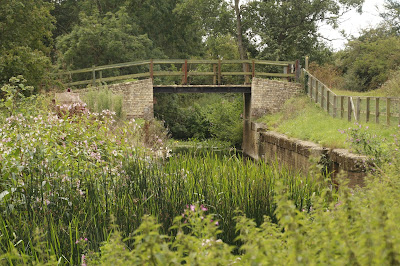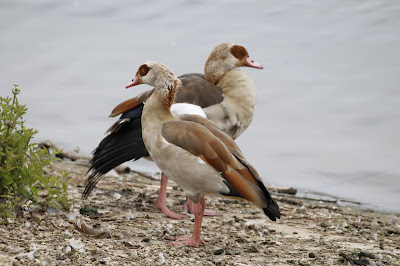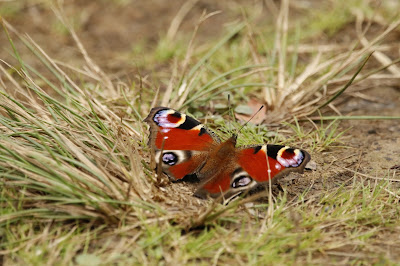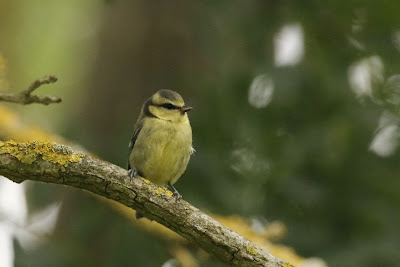Pipps Ford is a decent local site which seems to attract a lot of birds to its variety of habitats. For a site like this to not be a nature reserve yet being so good for nature is quite strange.
I turned up mid morning, and the day thereafter was mainly overcast with occasional sun burning through later on, although it never got particularly warm.
On the quarry it seems that digging has ended and they looked to be concentrating on landscaping, which they are by law obliged to do, before they leave the site. There was just the one bulldozer left now, no diggers.
The Active Quarry has been drained to produce lots of mud
The Active Quarry
The main place for birds at Pipps Ford today was the Active Quarry. What was a deep sided lake has been drained, leaving lots of mud available to entice migrant WADERS to stop off and it didn't disappoint. We are now coming up to peak Autumn migration and waders present were a REDSHANK, a GREENSHANK, two GREEN SANDPIPERS and a COMMON SANDPIPER. The redshank was a first for me in the Gipping Valley, as Pipps Ford is the only place where any wader habitat exists in the area. It just shows how local patch watching can produce more in-depth knowledge how a normally common and over looked bird can turn into a rarity.
Away from wading birds, a pair of LITTLE GREBES were creating a nest on the water. Now this could be the pair that has disappeared from the exhausted quarry, who are attempting to breed again, or are a new pair. There was a GREAT CRESTED GREBE on the water whilst the other bird which was nesting on an island has disappeared.
TUFTED DUCK had reduced to four birds from my last visit, and there were the usual single GEESE and SWAN. The pair of COMMON TERN were still present, this species is a real rarity in the area, for some reason, but they have decided to linger.
A new addition to the local wildlife, a small herd of horses grazing the grassy area around Riverside Farm Pit - OK its getting hard to produce new photos of the area.
The Exhausted Quarry was strangely quiet with just a pair of OYSTERCATHCERS fresh in. I don't know where all the other waterfowl have disappeared to, it seems that there was probably some kind of disturbance which has scared the birds off.
A walk along the river produced lots of BUTTERFLIES, including the COMMA in the photo at the top of the page. Birds were hard to come by though, with little about. GREEN WOODPECKERS have had a successful breeding season, with at least one juv about, yaffeling as it bounced through the air.
Riverside Farm Pit held 34 CANADA GEESE, whilst on Pippins Lake the single GADWALL chick was growing up fast, whilst there were five LITTLE EGRETS and six CORMORANTS present, which I reckon to be a local record. In the small bird flock around here there was a TREECREEPER and GARDEN WARBLER, but that was about it.
The lock and bridge over the river at Pipps Ford
Its a nice way to spend your days off, walking round your local patch, not a care in the world. Birdwatching provides so much peace of mind, yet doesn't ask for much in turn. Furthermore, local patch birdwatching really adds another dimension to the hobby just knowing an area free of any need to see something spectacular. In a way its like being at one with the rhythms of nature.







































